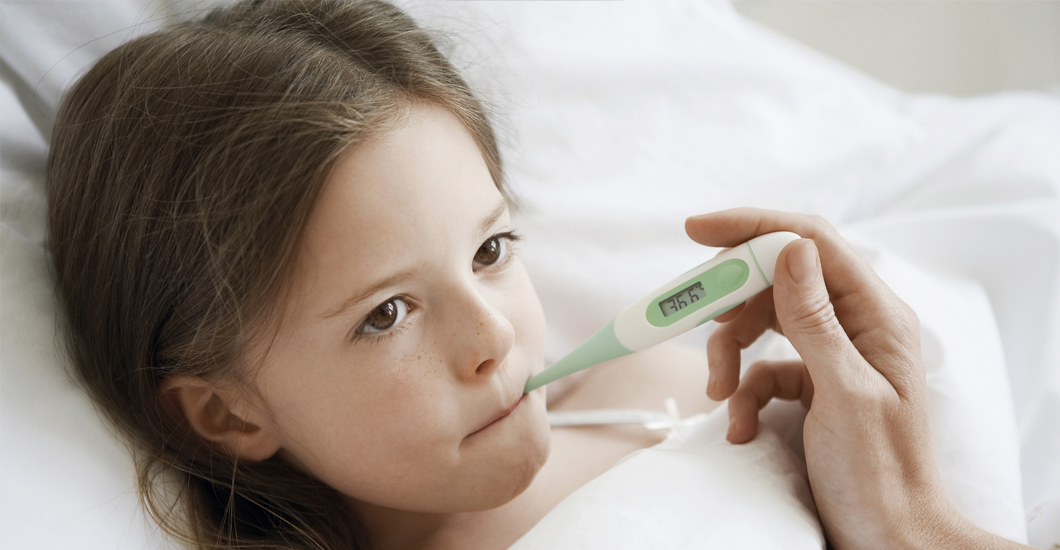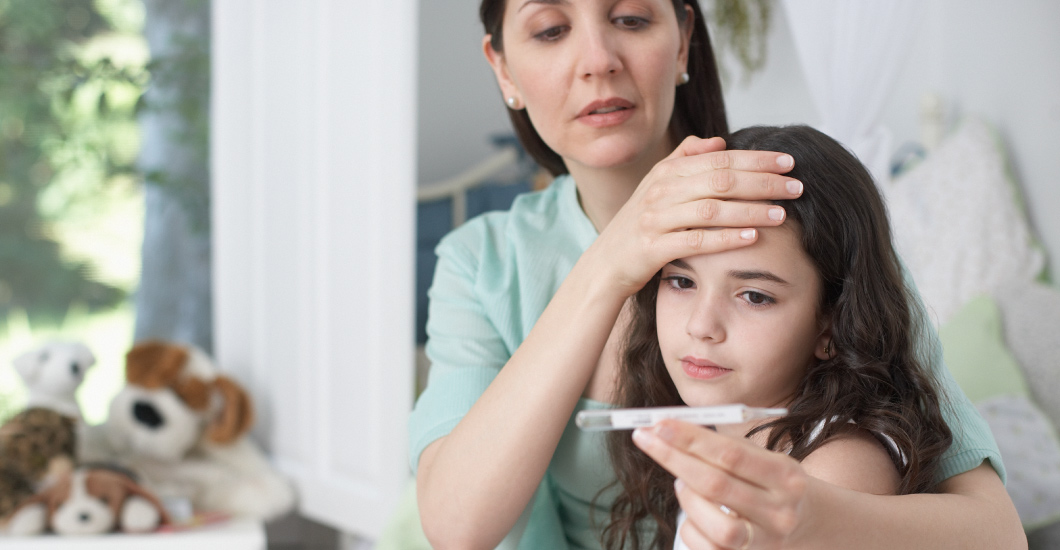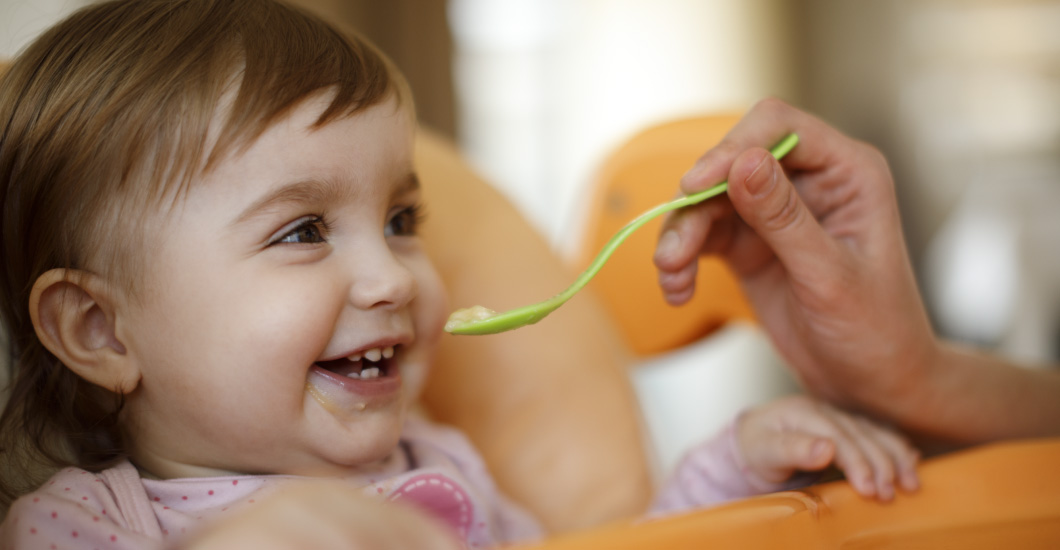Let's put fever into perspective: fever myths and facts
Tips for parents /

When it comes to fever, there is advice based on reliable, medical information as well as a number of myths based on what some call "conventional wisdom." We clarify some of those beliefs here.
Myth: Fever is dangerous, especially for children.
Reality: False. Fever is the healthiest response of the immune system when it is fighting off an infection. Because it is a symptom rather than a disease, fever is not harmful to either adults or children, but it does generate a great deal of fear and stress, particularly among the parents of small children with high temperatures.
Myth: Mercury thermometers aren't reliable.
Reality: False. In recent years, many have advised against the use of mercury thermometers, but not because they are harmful to the body. When these thermometers aren't disposed of properly, they can end up in water sources such as rivers or the ocean. When the mercury comes into contact with water, it becomes methyl mercury, a substance that is absorbed by fish and can cause irreversible neurological damage in humans who eat them. But the mercury in thermometers in no way affects patients who use them to take their temperature. Mercury thermometers are still safe and reliable, as are electronic and digital thermometers that can be found in any specialty store.
Myth: Fever produces meningitis.
Reality: False. It's a mistake to believe that high fever causes brain damage or affects the neurological development of children. Nor does it cause meningitis (inflammation of the membranes covering the brain). Actually, fever is a sign of a nervous system infection such as meningitis or encephalitis. Inflammation of the meninges usually results from an infection caused by a virus, bacteria, fungi, and other germs. The most complicated are those caused by bacteria, which often have long-term consequences, even after the patient has received prompt and adequate care. According to child neurologist Álvaro Izquierdo, the bacteria most likely to enter the central nervous system are Haemophilus influenzae, pneumococcus, and Neisseria meningitidis (also known as meningococcus). In Colombia, close to 30% of all meningitis cases are the result of pneumococcal infection, while 15% correspond to Haemophilus influenzae. Fortunately, mortality rates have decreased since vaccines for these two infections were included in the required set of vaccines for all Colombian children.
Myth: Fever causes seizures.
Reality: False. Only 2% to 8% of children with fever suffer seizures, and the key factor isn't how high the fever is, but the child's genetic predisposition. Children with a family history of seizures are more sensitive to any rise in temperature, no matter how small. Also, if the seizures are controlled with medication, that doesn't mean that they won't reoccur. What is important to keep in mind is that a child who suffers seizures as a result of a fever does not have a higher risk of epilepsy, mental disability, or development problems in the future.
Myth: High fevers are the most dangerous.
Reality: False. Sometimes the common cold produces a very high fever, while in other cases a slight fever may accompany a very serious illness. Fortunately, most cases of fever among babies and small children are caused by viruses, while very few are caused by bacteria. That's why in addition to monitoring the child's temperature it is important to look for the appearance of other symptoms such as vomiting, difficulty breathing, rapid breathing, increased heart rate (tachycardia), skin spots, glassy, bloodshot eyes, weakness, and overall discomfort. When these symptoms are present, or when the fever persists for more than 48 hours, consult your doctor. Children under three years old who have a temperature of 38° C (100.4° F) should be taken to the emergency room.
Myth: Taking a warm or cold bath brings a fever down quickly.
Reality: False. People often do everything they can to try to lower a fever, to no avail. You should never take a shower or a warm or cold bath, which would cause a sudden change in temperature that prompts the body to recover its thermal balance. Nor should ethyl alcohol be applied to the patient's armpits, forehead or soles of the feet, to avoid absorbing it. The best course of action is to not cover the patient up, have them wear light clothing, air out the room, and increase the amount of liquids they drink to prevent dehydration. It is important not to stop breastfeeding if a child with fever under six months old and continue to feed older children normally.
Myth: Medication should always be used to lower a fever.
Reality: False. Many situations, including those not related to an illness, can cause fever. These include teething among babies, vaccination, or a minor cold, and it's not necessary to use medications since these are normal reactions of the body's self-defense system. Also, more important than the degree or number shown on the thermometer, what counts is the patient's general state. For example, when a child has fever but is active, plays, and eats well, he or she will probably recover in a couple of days with the proper care at home and without the need for any medication. Pharmacological treatment should only be used in cases where there is a great deal of discomfort. The drugs used are acetaminophen and ibuprofen; dosages for children should be adjusted according to their weight and age. These medications don't help the patient recover faster, or avoid complications, nor do they prevent seizures resulting from fever. They also can't keep the patient's temperature from rising again. As soon as the medication's effect ends, the fever will return as long as the infection is present and the body is trying to defend itself. Also, antibiotics are only useful for bacterial infections, but not for viral infections. In any case, use common sense: it's almost always right, and will steer you in the right direction when you or your child has a fever.


